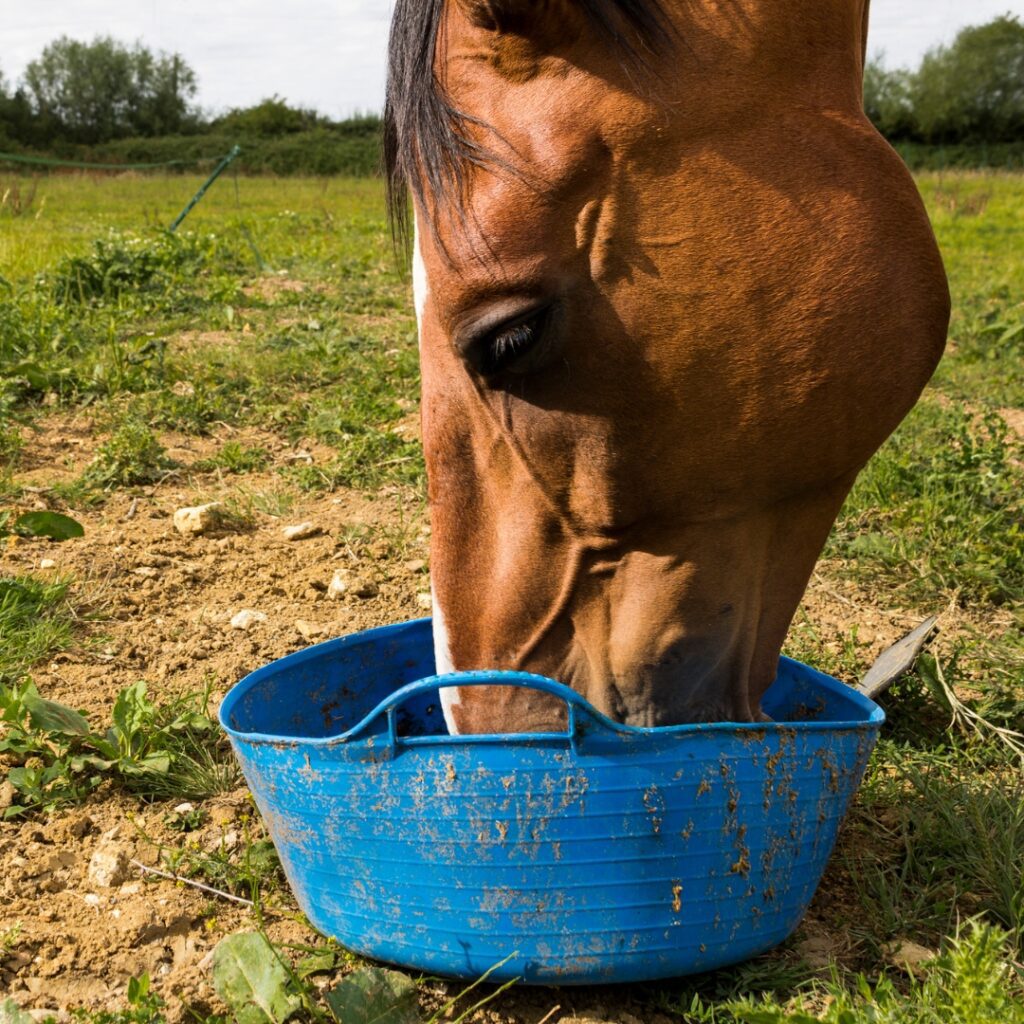
Most feed brands have multiple lines of feeds with various products – this can be challenging to navigate as a horse owner. An issue that I see on an almost daily basis is that horse owners are using a product that doesn’t match their horse’s needs. Therefore, this Friday with Finn blog post is going to focus on the three broad categories of feeds and in which situations they should be used. The goal of this article is to provide you with valuable information on distinguishing feed types and which may be ideal for your horse.
The three broad categories are ration balancers, performance feeds, and complete feeds. Each has a time and a place in equine nutrition. When you can evaluate your horse’s nutritional needs and navigate the various feed types you can set a great baseline for a nutrition program.
Ration balancers
Ration balancers are designed to simply fill the nutritional gaps in the hay. They will provide a concentrated source of vitamins and minerals. Some ration balancers will also provide additional protein. These are regarded as a minimum as even easy keepers require a ration balancer due to hay not meeting a horse’s vitamin and mineral requirements.
Within the ration balancer category, there are a few different types; the vitamin and mineral premixes, the concentrated pellets, and those that also provide additional protein. Normally the feeding rate for these will vary from ~200 g up to ~ 1000 g.
If your horse is an easy keeper, your hay analysis will provide you with information to base your ration balancer decision on. For example, my mare is an easy keeper, and her hay provides adequate protein, therefore I simply feed her 200 g of a concentrated pelleted ration balancer. A few popular ration balancers in Ontario that I commonly see are KPP Microphase, Tribute Essential K, Hoffman’s Horse Minerals, Mad Barn Omneity, Buckeye Gro ‘n Win, Masterfeeds VTM 20 and Brooks Enhancer. Please note that this is not an extensive list, simply a few examples.
Performance/Breeding Feeds
The feeding rate of these feeds is higher than ration balancers. They provide vitamins and minerals as well as additional carbohydrates, protein, and fats. Since these products provide more to the horse you must feed them in larger quantities to meet the horse’s vitamin and mineral requirements.
These products work very well when they are applied to the correct situation. However, what I normally see is that horse owners will purchase one of these products and then feed a very small quantity (e.g., a few cups). This then results in various vitamin and mineral deficiencies as the products are formulated to be fed at higher feeding rates for those horses that need greater nutritional support. The typical feeding rates that are recommended for these products are about 4-10 kg per day.
These feeds are popular for equine athletes and horses that struggle to maintain weight. They can also be used for pregnant mares that require additional supplementation. If you are feeding one of these products and really like it but are feeding it below the recommended daily amount, you can simply add a ration balancer to meet the vitamin and mineral requirements. This is where working with an equine nutritionist can become important as you will want to ensure you are meeting the requirements without greatly oversupplying any nutrients, for example, selenium as it can lead to toxicity issues. A few popular performance/breeding feeds that I commonly see are Purina Evolution Maternity, Masterfeeds Podium Cool Energy, Brooks Fibre O Plus, Tribute Growth and Buckeye Supreme 14.
Complete Feeds
Complete feeds are a bit different as they also include the fibre portion of an equine diet. These are designed for horses that have compromised dentition. For example, a senior horse that has poor dentition and is unable to adequately consume hay would likely benefit from a complete feed. When looking at the feeding rates you will notice that these products have an option if the ration does not include hay. Therefore, they need to be fed in the largest quantities to meet vitamin and mineral requirements. An example of this is the Tribute Seniority feed.
Please remember, always start with a hay analysis as that will provide you with crucial information on your horse’s nutrition. Hay is the primary component of their daily feed; therefore, it only makes sense to know the nutritional value. For example, let’s say your horse has been doing well on a ration balancer that does not supply additional protein (fed at 200 g per day), however, this year your hay is lower in protein and your horse begins to lose muscle. A simple change in ration balancer could have prevented these nutritional issues, therefore, make hay testing a regular practice so you can avoid nutritional deficiencies that compromise your horse’s well-being.
To conclude, there are a plethora of different products available to feed your horse and navigating which may be ideal can be challenging. Hopefully, this basic breakdown of the broad feed categories can assist you in choosing an optimal product for your horse. Please note that just because a product is listed in this article does not mean that it is endorsed by Balanced Bay. Every horse is unique and as an independent nutritionist, I ensure that I have all of the information on your horse’s individual needs as well as hay prior to recommending a product.
If you would like to get a hay analysis done and learn more about optimizing your horse’s nutrition do not hesitate to reach out at here.
By: Madeline Boast, MSc. Equine Nutrition